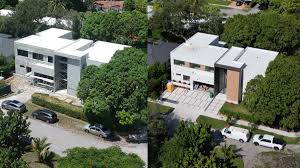Real estate development is a multifaceted process that involves various steps from inception to completion. Whether you’re a seasoned developer or a newcomer to the industry, understanding these key steps is crucial for success. In this guide, we’ll delve into the essential stages of real estate development, providing insights into each phase of the journey.
Key Steps in Real Estate Development: A Comprehensive Guide
1. Market Research and Feasibility Analysis
Before diving into any development project, thorough market research and feasibility analysis are paramount. This initial step involves evaluating the demand and supply dynamics of the target market, understanding demographic trends, and assessing the economic viability of the project. By conducting comprehensive market research, developers can identify opportunities, mitigate risks, and make informed decisions about the feasibility of their ventures.
2. Site Acquisition and Due Diligence
Once a viable opportunity is identified, the next step is site acquisition. This entails identifying suitable parcels of land or existing properties that align with the project’s objectives. However, before proceeding with the purchase, thorough due diligence is essential. This involves assessing the site’s legal, environmental, and physical aspects to uncover any potential obstacles or liabilities that may affect the development process.
3. Design and Planning
With the site secured, the focus shifts to the design and planning phase. During this stage, architects, engineers, and other professionals collaborate to conceptualize the project and create detailed plans and blueprints. Design considerations may include the layout of buildings, landscaping, infrastructure, and amenities. Additionally, developers must obtain necessary permits and approvals from local authorities before proceeding further.
4. Financing and Capitalization
Securing adequate financing is a critical aspect of real estate development. Developers may explore various sources of capital, including traditional bank loans, private investors, equity partners, and crowdfunding platforms. The financing structure should align with the project’s financial projections and risk profile, ensuring sufficient funds are available to cover acquisition, construction, and other expenses throughout the development process.
5. Construction and Development
With financing in place, construction can commence. This phase involves transforming the conceptual plans into tangible structures, whether it be residential, commercial, or mixed-use developments. Effective project management is essential to oversee construction activities, manage budgets, and adhere to timelines. Collaboration with contractors, subcontractors, and suppliers is key to ensuring quality craftsmanship and timely delivery.
6. Marketing and Sales (or Leasing)
As the project nears completion, attention turns to marketing and sales (or leasing). Developers must create effective marketing strategies to attract potential buyers or tenants and showcase the unique features and benefits of the development. This may involve staging model units, hosting open houses, and leveraging digital marketing channels and advertise like Flats in Chennai for Sale can reach a broader audience. Building strong relationships with real estate agents and brokers can also facilitate sales efforts.
7. Handover and Asset Management
Once construction is complete and units are sold or leased, the final step is the handover of the property to buyers or tenants. Developers must ensure a smooth transition and address any outstanding issues or deficiencies promptly. Additionally, effective asset management is crucial for maximizing the long-term value of the development. This may involve ongoing maintenance, property management, and tenant relations to ensure optimal occupancy rates and rental yields.
In conclusion, real estate development involves a series of interconnected steps, each crucial to the overall success of the project. By understanding and navigating these key stages effectively, developers can mitigate risks, capitalize on opportunities, and deliver projects that meet market demand and generate positive returns on investment.







